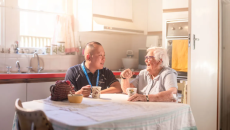Telehealth
The agencies' special telehealth registries will also be postponed with this latest delay of long-awaited telehealth prescribing guidance.
AI-powered remote monitoring using low-cost, disposable sensors can help VA clinicians spot potential issues and intervene to encourage veteran patients to stay compliant, says Kent Dicks, CEO of Life365.
While healthcare organizations applaud lawmakers' support for extending flexibilities in FY25 stopgap legislation, they still have concerns about long-term certainty for virtual care.
Remote Patient Monitoring
The connected care leader at Philips explains how remote patient monitoring tech can combat hospitals' and health systems' problems with patient retention and overall capacity.
Also, the NSW government has launched a free virtual urgent care service in Sydney.
Much-needed virtual care to underserved Indigenous communities is in development in the Whitecap Dakota First Nation, reports Ivar Mendez, director of Canada's Virtual Health Hub.
If the DEA's role is not properly limited, there could be an overreach where the agency influences or even dictates how healthcare practitioners make decisions, which could impact patient care, says Dan Cohen, president of RTM company Adhere+.
This comes after pulling funding for some telehealth services amid receding uptake and cost-cutting.
Tom Leary, senior vice president and head of Government Relations at HIMSS, gives a rundown of healthcare priorities.
The chiefs of three publications go over what they covered on the second day of HIMSS25, including EMRAM Stage 7 awards, the fate of telehealth and precision medicine.








